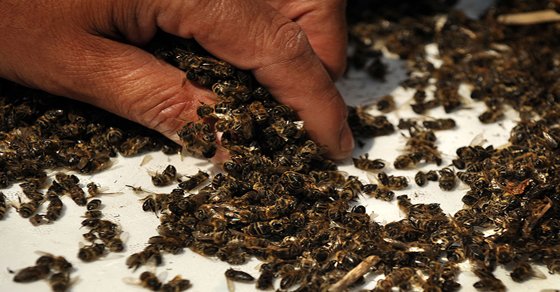In the verdant farmlands of Ontario, Canada, a silent ecological crisis is unfolding that threatens the delicate balance of agricultural ecosystems. The recent incident at Mikkola Family Farm & Apiary, where approximately 1.2 million bees were found dead, has brought into sharp focus the complex relationship between genetically modified corn, neonicotinoid pesticides, and bee populations.
The Critical Role of Bees in Our Ecosystem
Bees are far more than honey producers; they are essential pollinators that play a crucial role in global food production and environmental sustainability. These tiny insects are responsible for pollinating approximately 75% of global crops, contributing an estimated $217 billion annually to the world economy. However, bee populations have been experiencing alarming declines, with Colony Collapse Disorder (CCD) emerging as a critical threat to their survival.
GMO Corn and the Neonicotinoid Controversy
At the heart of the bee mortality issue are neonicotinoid pesticides, a class of chemical compounds widely used in genetically modified corn seed treatments. These systemic pesticides are designed to protect crops from insect damage, but scientific research increasingly suggests they pose a significant risk to pollinator health.
- Approximately 94% of corn seeds are treated with neonicotinoids like clothianidin and imidacloprid
- These pesticides can persist in plant tissues for extended periods
- Even sub-lethal concentrations can cause severe neurological damage to bees
How Bees Are Exposed to Pesticides
Bees encounter these toxic compounds through multiple pathways. Seed planter exhaust releases pesticide-laden dust during planting, which can directly contaminate surrounding vegetation. Additionally, bees foraging on crops and nearby plants absorb these chemicals through pollen and nectar, leading to chronic exposure that weakens entire colonies.
Mechanisms of Pesticide Impact
Neonicotinoids attack bees’ central nervous systems, causing:
- Disorientation and navigation difficulties
- Reduced ability to communicate within the hive
- Compromised immune system functionality
Beyond Pesticides: Complex Factors in Bee Mortality
While neonicotinoids are a significant concern, bee population decline is multifaceted. Varroa mites, viral infections, migratory beekeeping practices, and nutritional challenges also contribute to colony stress. Over-winter losses in Ontario have been particularly severe, with some beekeepers reporting colony losses exceeding 50%.
Regulatory Landscape and Environmental Implications
The mounting scientific evidence has prompted calls for stricter regulation of neonicotinoid use. Some jurisdictions have already implemented partial or complete bans on these pesticides, recognizing the potential long-term environmental consequences.
Potential Solutions
Addressing this complex issue requires a multi-pronged approach:
- Implementing more rigorous pesticide testing protocols
- Promoting alternative pest management strategies
- Supporting research into bee-friendly agricultural practices
- Developing comprehensive bee conservation programs
Looking Forward: A Call for Sustainable Agriculture
The ongoing bee mortality crisis in Ontario serves as a stark reminder of the intricate connections within our agricultural ecosystems. By prioritizing pollinator health and adopting more sustainable practices, we can work towards a future where agricultural productivity coexists with environmental preservation.
As consumers, researchers, and policymakers, we must continue to support scientific research, demand responsible agricultural practices, and recognize the critical role of bees in maintaining global biodiversity and food security.





